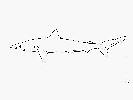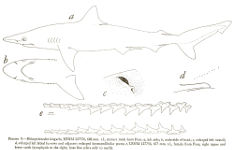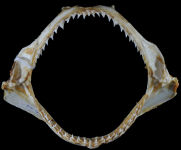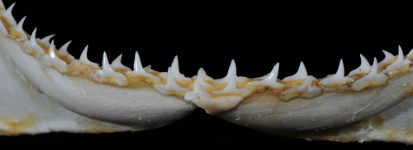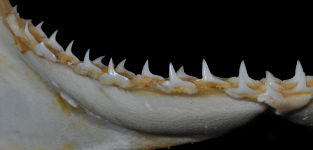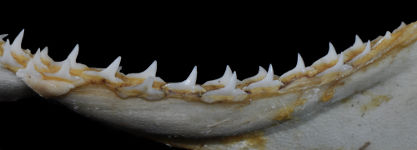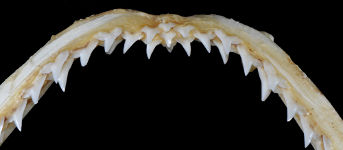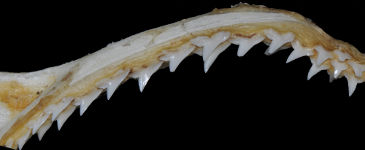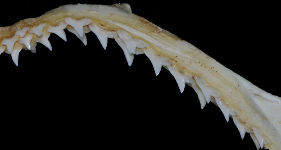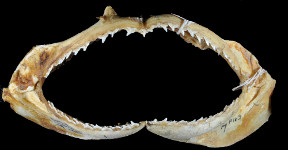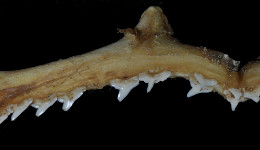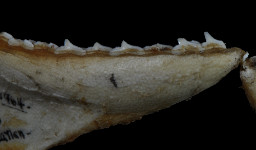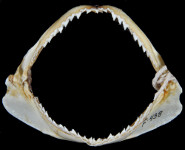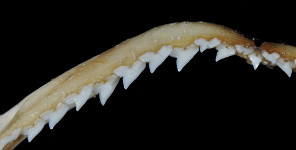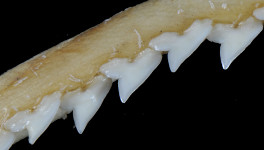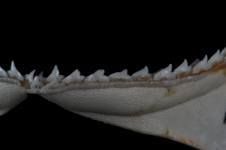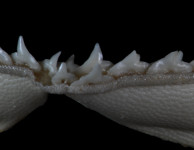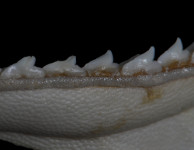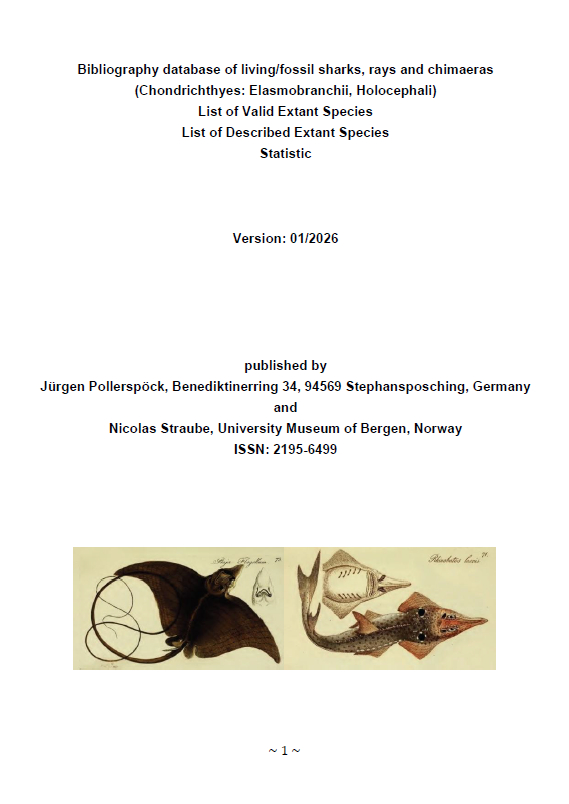Rhizoprionodon longurio
(Jordan & Gilbert, 1882)
Pacific sharpnose shark
Classification: Elasmobranchii Carcharhiniformes Carcharhinidae
Reference of the original description
Description of four new species of sharks, from Mazatlan, Mexico. Proceedings of the United States National Museum, 5, 102–110
Description of four new species of sharks, from Mazatlan, Mexico. Proceedings of the United States National Museum, 5, 102–110
Image of the original description
No image in first description.
No image in first description.
Synonyms / new combinations and misspellings
Carcharhinus longurio, Carcharias longurio, Rhizoprionodon cf. longurio, Rhizoprionodon (Rhizoprionodon) longurio, Scoliodon longurio
Carcharhinus longurio, Carcharias longurio, Rhizoprionodon cf. longurio, Rhizoprionodon (Rhizoprionodon) longurio, Scoliodon longurio
Types
Rhizoprionodon longurio
Lectotype: USNM: 28330; Paralectotype: USNM: 29551; USNM: 29541; USNM: 28331; USNM: 28306;
Rhizoprionodon longurio
Lectotype: USNM: 28330; Paralectotype: USNM: 29551; USNM: 29541; USNM: 28331; USNM: 28306;
Description :
Citation: Rhizoprionodon longurio (Jordan & Gilbert, 1882): In: Database of modern sharks, rays and chimaeras, www.shark-references.com, World Wide Web electronic publication, Version 01/2026
Please send your images of "Rhizoprionodon longurio" to info@shark-references.com
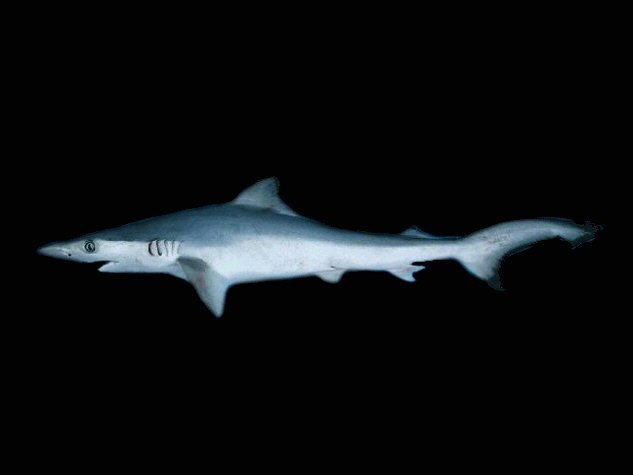
Rhizoprionodon longurio (Jordan & Gilbert, 1882), © Centro Interdisciplinario de Ciencias Marinas (CICIMAR-IPN) http://coleccion.cicimar.ipn.mx

Rhizoprionodon longurio (Jordan & Gilbert, 1882), © Centro Interdisciplinario de Ciencias Marinas (CICIMAR-IPN) http://coleccion.cicimar.ipn.mx
Common names
 Cazon picudo,
Cazon picudo,  Cazón,
Cazón,  Cazón bironche,
Cazón bironche,  Cazón picudo del Pacífico,
Cazón picudo del Pacífico,  Tiburón hocicón,
Tiburón hocicón,  Tiburón hocicón del Pacífico,
Tiburón hocicón del Pacífico,  Tiburón tollo,
Tiburón tollo,  Tollito,
Tollito,  Tollo,
Tollo,  Requin bironche,
Requin bironche,  Pacific sharp-nosed shark,
Pacific sharp-nosed shark,  Pacific sharpnose shark,
Pacific sharpnose shark,  Squalo di Terranuova,
Squalo di Terranuova,  Tubarao-terranova,
Tubarao-terranova,  Tubarão-bicudo-do-Pacífico#
Tubarão-bicudo-do-Pacífico#
 Cazon picudo,
Cazon picudo,  Cazón,
Cazón,  Cazón bironche,
Cazón bironche,  Cazón picudo del Pacífico,
Cazón picudo del Pacífico,  Tiburón hocicón,
Tiburón hocicón,  Tiburón hocicón del Pacífico,
Tiburón hocicón del Pacífico,  Tiburón tollo,
Tiburón tollo,  Tollito,
Tollito,  Tollo,
Tollo,  Requin bironche,
Requin bironche,  Pacific sharp-nosed shark,
Pacific sharp-nosed shark,  Pacific sharpnose shark,
Pacific sharpnose shark,  Squalo di Terranuova,
Squalo di Terranuova,  Tubarao-terranova,
Tubarao-terranova,  Tubarão-bicudo-do-Pacífico#
Tubarão-bicudo-do-Pacífico#
Short Description
Field Marks : The only requiem shark in the eastern Pacific with long labial furrows and a second dorsal origin well behind the anal origin. See key to species and diagnostic features for characters separating it from other members of its genus.
Diagnostic Features : Prenarial snout 4.5 to 6% of total length; upper labial furrows long, 2.1 to 2.6% of total length; total count of enlarged hyomandibular pores on both sides of head just behind mouth angle usually over 16 (8 to 15 on each side); teeth with serrated edges in adults; teeth not differentiated between sexes; total tooth rows usually 27 to 29/26 to 28. First dorsal origin usually over or slightly in front of pectoral free rear tips; second dorsal origin above last third of anal base in front of its insertion; pectoral anterior margin usually equal to or shorter than first dorsal length from origin to free rear tip; adpressed apex of pectoral reaches anterior third or two-thirds of first dorsal base. Posterior monospondylous precaudal centra greatly enlarged; precaudal centra variably 12 less to 8 more than caudals, precaudals 68 to 86, total counts 146 to 167. Size moderate, males maturing over 60 cm total length. Colour grey or grey-brown above, white below, pectoral fins with light edges, dorsals with dusky tips. [517]
Field Marks : The only requiem shark in the eastern Pacific with long labial furrows and a second dorsal origin well behind the anal origin. See key to species and diagnostic features for characters separating it from other members of its genus.
Diagnostic Features : Prenarial snout 4.5 to 6% of total length; upper labial furrows long, 2.1 to 2.6% of total length; total count of enlarged hyomandibular pores on both sides of head just behind mouth angle usually over 16 (8 to 15 on each side); teeth with serrated edges in adults; teeth not differentiated between sexes; total tooth rows usually 27 to 29/26 to 28. First dorsal origin usually over or slightly in front of pectoral free rear tips; second dorsal origin above last third of anal base in front of its insertion; pectoral anterior margin usually equal to or shorter than first dorsal length from origin to free rear tip; adpressed apex of pectoral reaches anterior third or two-thirds of first dorsal base. Posterior monospondylous precaudal centra greatly enlarged; precaudal centra variably 12 less to 8 more than caudals, precaudals 68 to 86, total counts 146 to 167. Size moderate, males maturing over 60 cm total length. Colour grey or grey-brown above, white below, pectoral fins with light edges, dorsals with dusky tips. [517]
Human uses
fisheries: commercial
fisheries: commercial
Habitat
benthopelagic; marine; depth range ? - 27 m
benthopelagic; marine; depth range ? - 27 m
Remarks
shark-references Species-ID=6113;
shark-references Species-ID=6113;








